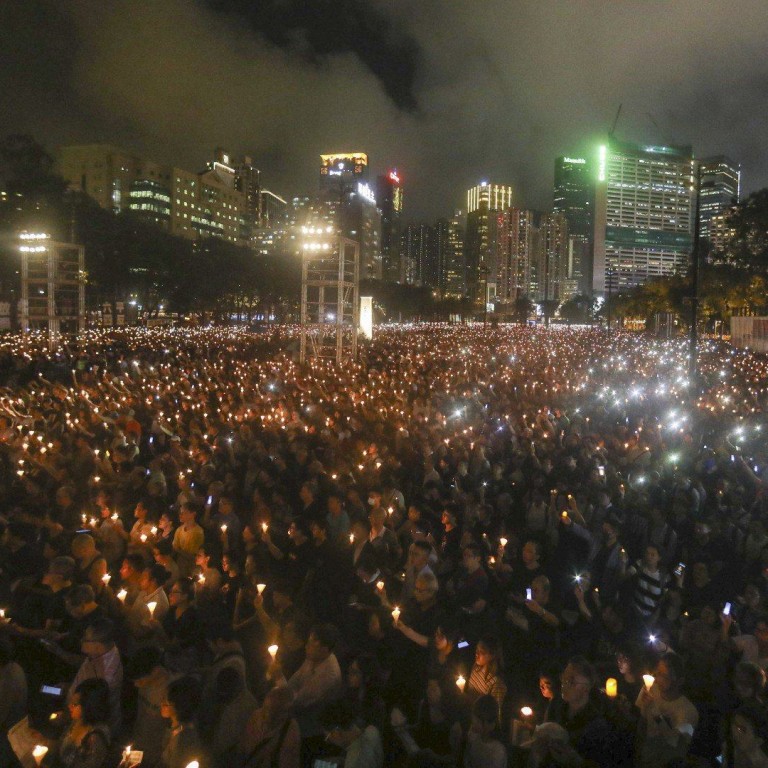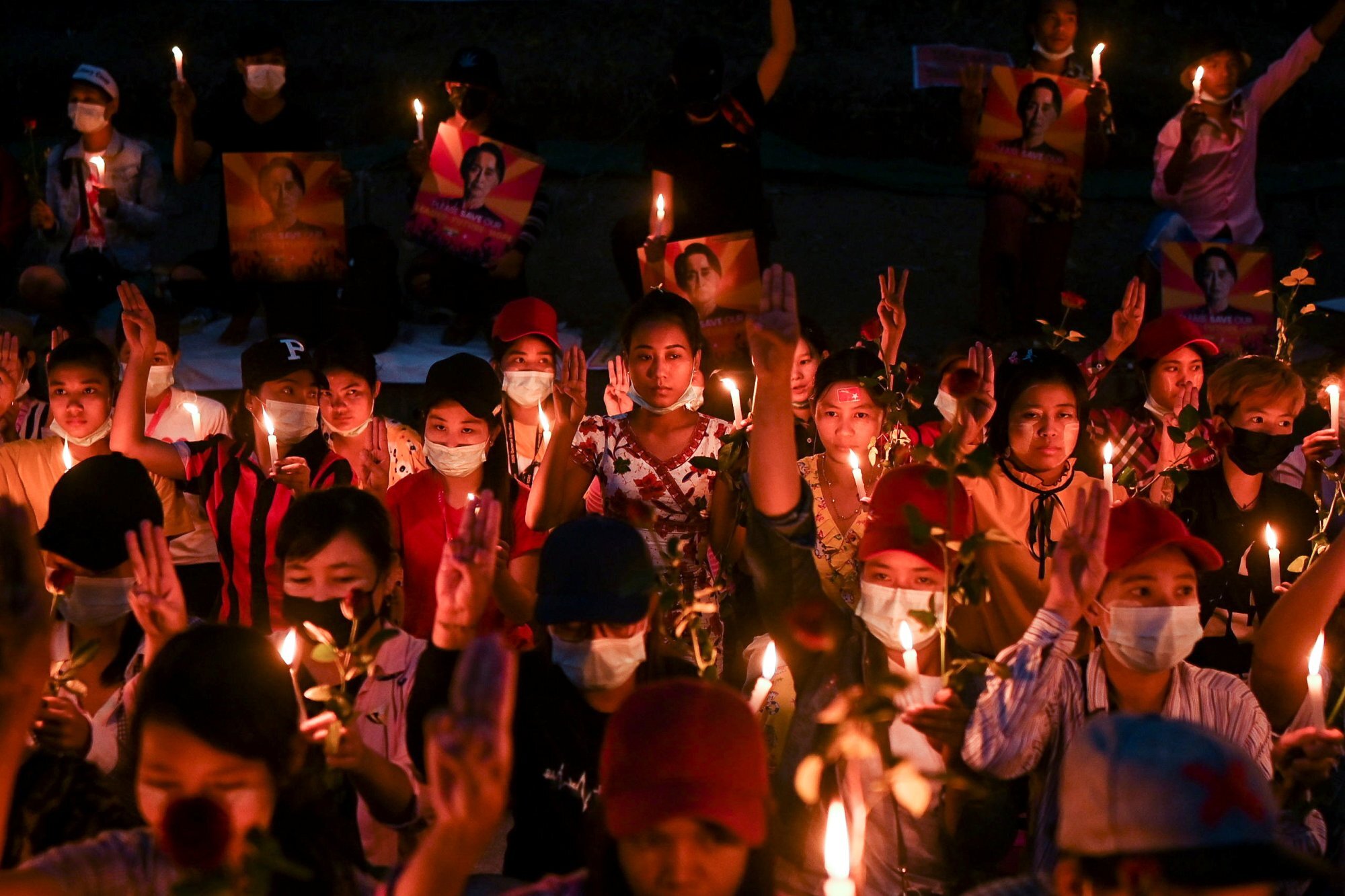
Hong Kong’s Tiananmen remembrance: where the word ‘vigil’ comes from
- The modern-day meaning of ‘vigil’ as a stationary, peaceful demonstration in support of a particular cause didn’t develop until as late as the mid-20th century
- It stems from the same Latin word meaning ‘watchful, awake, alert’
The word “vigil” entered English from the Anglo-French/Old French vigile, meaning a watch or guard, or the eve of a holy day, which stems from Latin vigilia “a watch, watchfulness, wakefulness”, from Latin vigil “watchful, awake, alert”. This ultimately derives from the Proto-Indo European root weg- meaning “to be strong, lively”.
In the Christian church, a vigil refers to the eve of a festival or holy day, as an occasion of devotional watching or religious observance, this meaning from the 13th century. The Easter vigil is perhaps the best known – paralleling Jesus keeping vigil in the Garden of Gethsemane. Christmas Eve is known in Italy as La Vigilia, clipped from la vigilia di Natale or “the eve of Christmas”. Texts from the Russian Orthodox vigil ceremonies held on the eves of Sundays and major feast days formed the basis of Tchaikovsky’s and Rachmaninoff’s choral compositions titled All-Night Vigil.
The broader sense of a period of watchful attention, maintained during normal hours for sleep, for special reasons – such as the vigil kept by the bedside of someone gravely ill – developed around the 18th century.
When one is watchful, alert, observant, one is vigilant. This entered English via the French and/or Latin vigilant, present participle of the Latin vigilāre “to keep awake”, also originating in Latin vigil “awake”.

Cognate words found in the other Romance languages gave English vigilante. Borrowed from the Spanish vigilante “watchman, guard”, in 1856, this started being used to refer to a member of a secret tribunal of citizens, organised to suppress and punish crime summarily, in particular when the processes of law were viewed as inadequate. Its origins were in the vigilance committees of the American South in the 1820s/30s, after the Civil War, to intimidate blacks and abolitionists. Vigilantism – the extralegal investigation or punishment of offences – is still found in many societies, including cyber-vigilantism.
For a non-violent response, we return to the vigil in its modern-day meaning, which developed as late as the mid-20th century – of a stationary and peaceful demonstration in support of a particular cause, such as to protest the suffering of marginalised groups, or to commemorate the victims of a natural disaster, illness or homicide. Characterised by the absence of speeches or other explicit advocacy of the cause and lasting one to several nights, these are usually held as candlelight vigils.
With vigils – albeit peaceful assemblies – increasingly cancelled for reasons of safety or public health, the virtual or doorstep vigil has evolved, with supporters shining a light wherever they are.

